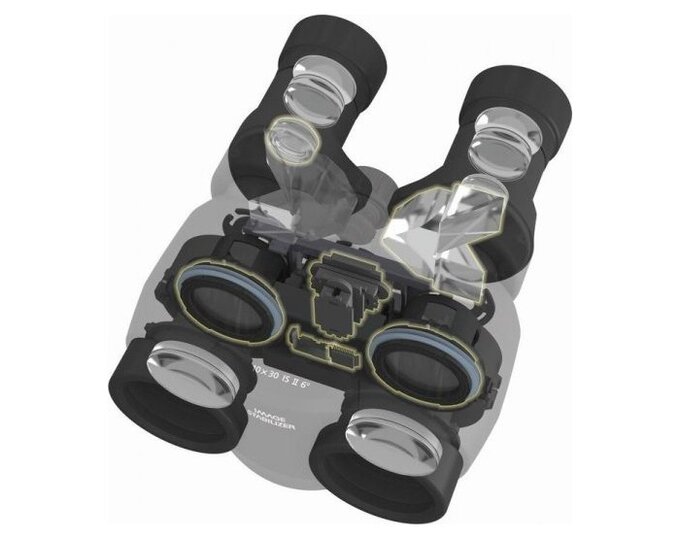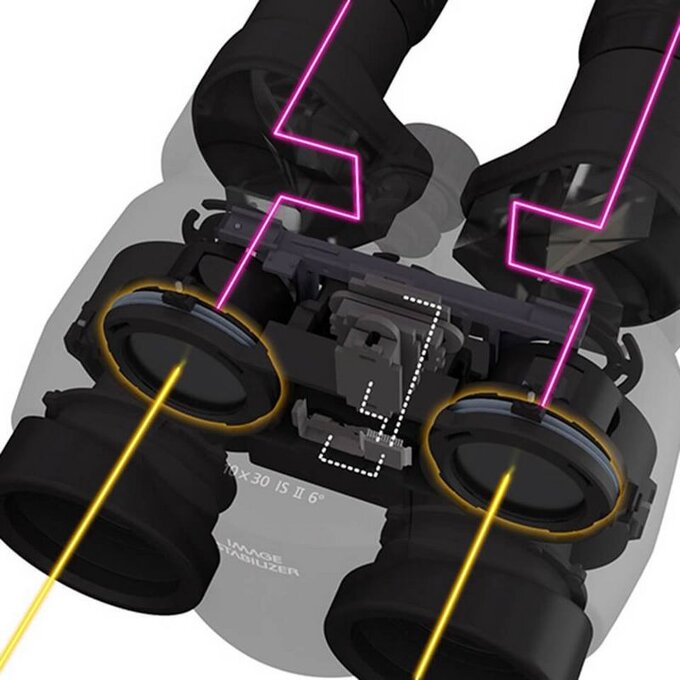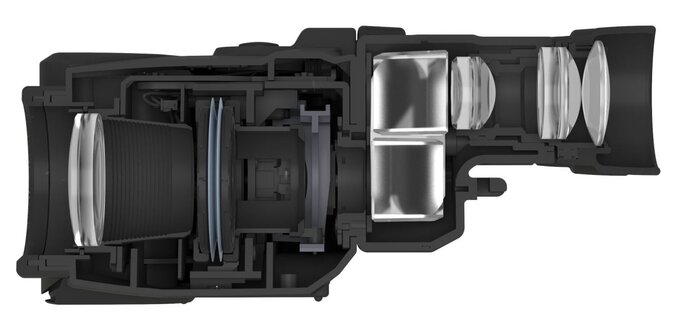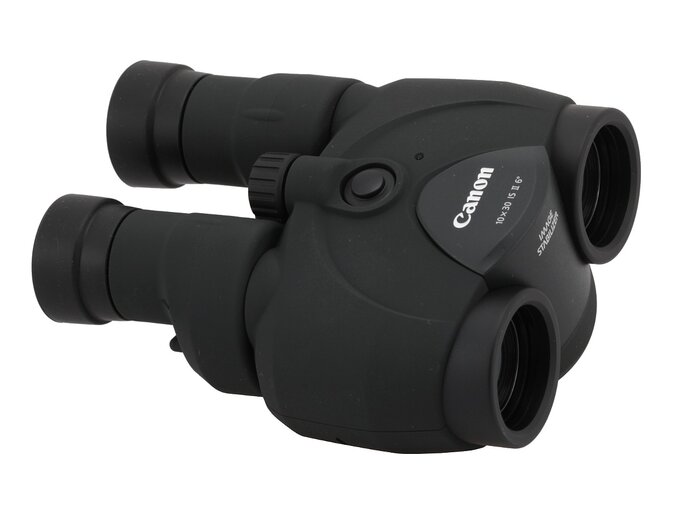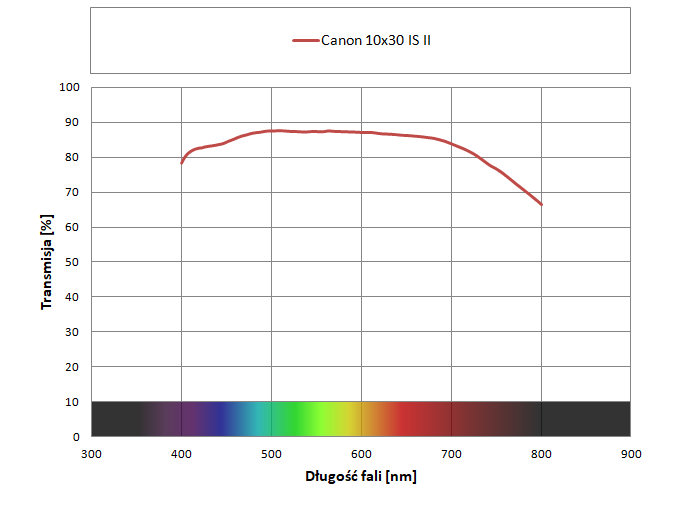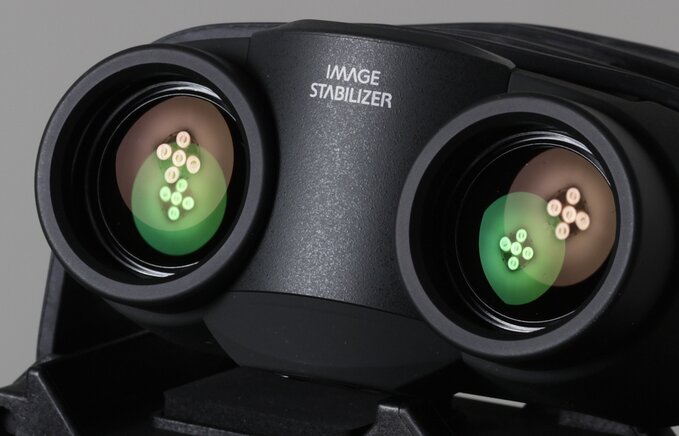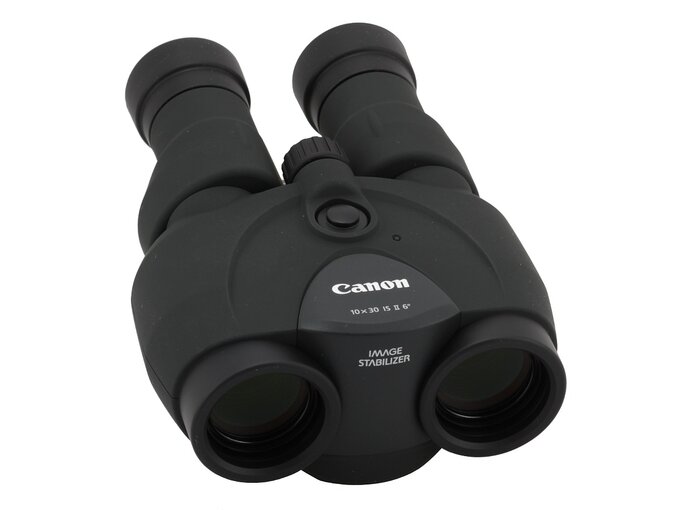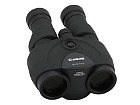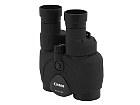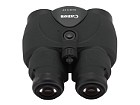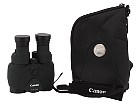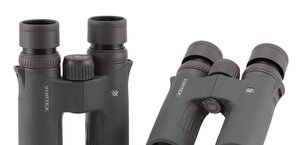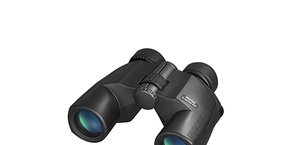| Real front lens diameter |
Left: 30.1+/-
0.05 mm
Right: 30.08+/-
0.05 mm
|
8 / 8.0 pkt |
| Real magnification |
10.09+/-
0.05x
|
3/3.0 |
| Transmission |
87.5+/-
1%
|
15/25.0 |
| Chromatic aberration |
Low in the centre, a bit higher than medium on the edge. |
6.5/10.0 |
| Astigmatism |
Practically imperceptible. |
8.7/10.0 |
| Distortion |
The distance of the first curved line from the field centre compared to the field of view radius: 43% ± 4% |
4/10.0 |
| Coma |
Appears in a distance of 80-85% of the field of view radius and is a bit higher than low on the very edge. |
9.3/10.0 |
| Blurring at the edge of the FOV |
The blur occurs in the distance of 96% +\- 3% from the field of view centre. |
9/10.0 |
| Darkening at the edge the FOV |
Slight |
4/5.0 |
| Whiteness of the image |
A quite flat transmission graph. Very delicate yellow-green colouring of images. |
4.5/5.0 |
| Collimation |
Perfect. |
5/5.0 |
| Internal reflections |
| Left: |
Right:
|
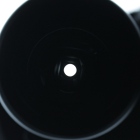 |
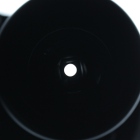 |
Dark areas around exit pupils. |
4/5.0 |
| Housing |
Not big for a stabilized pair of binoculars. Smooth rubber padding of good quality that sticks to the chassis properly well, even near objective lenses. Relatively small eyepieces but they are comfortable to use. Soft, perhaps even a tad too soft eyecups, without any regulation. They can be folded. Manufactured in Taiwan. |
7.5/8.0 |
| Focusing |
Small, ribbed central wheel with a range of 420 deg. Its resistance is very low – it moves too loosely. The wheel moves the objectives. Dioptre correction done on the right eyepiece; it moves the outer lens but it works as it should. |
3.5/5.0 |
| Tripod |
No tripod exit. Image stabilization. |
3/3.0 |
| Interpupilary distance |
from 53.9 to 74.7mm
|
5/6.0 |
| Closest focusing distance |
4.15 meters. |
1.5/2.0 |
| Eyepieces FOV |
Apparent field of view of 59.2 deg (simplified formula) and 54.7 deg (tangent formula). |
10/20.0 |
| Field of view |
Measured by us amounted to 5.87 +\- 0.04 degrees and it was a bit narrower than that stated in specifications. A quite typical field of view for this class of equipment. |
4.5/8.0 |
| Quality of the interior of the barrels |
Inner tubes are dark grey with a lot of baffles. Deeper you can spot some shiny parts – it seems there is a room for improvement here. Grey bottom. Some specks of dust on the prisms. |
3.2/5.0 |
| Vignetting |
| Left: |
Right:
|
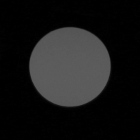 |
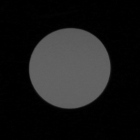 |
OL: 1.51%, OR: 1.29%. |
6/8.0 |
| Prisms quality |
High quality BaK-4. |
8/8.0 |
| Antireflection coatings |
Green-yellow-pink on objective lenses, pink-purple on the prisms, green-yellow-pink on eyepieces. Low intensity. |
5/5.0 |
| Warranty [years] |
2 years |
2/6.0 |
| Final result |
73.8%
|
140.2 / 190 pkt
|
| Econo result |
|
0pkt. |
Summary
Pros:
- solid casing,
- sensible correction of chromatic aberration,
- very low astigmatism,
- excellent coma correction,
- sharp images practically to the very diaphragm,
- slight brigntness loss on the edges,
- very good colour rendering,
- dark areas around exit pupils,
- efficient Porro II prisms made of BaK-4 glass,
- efficient image stabilization.
Cons:
- such optical system should provide transmission exceeding 90%,
- short warranty period,
- exit pupils not especially round in shape.
Even before we start to break the result of the tested Canon into the prime factors it's worth mentionig you deal here with a really well-put-together pair of binoculars. A result of over 140 points in the class of binoculars with objective lenses as big as 30-32 mm is reserved only for the best devices. The Canon 10x30 IS II undoubtedly should be counted among them.
When it comes to the quality of optics the tested lens might charm you with its field, sharp from one edge to the other, sensational coma correction, negligible astigmatism, and very good colour rendering which, of course, stemms from a relatively flat transmission graph.
Now comes the part where we are going to repeat the word 'a bit' many times. The Canon pair of binoculars has a bit too big physical dimensions and weight for the 30 mm class. Of course the stabilization mechanism is to blame. Should it be added at all in this class of parameters? Let's deal with this problem in a moment.
You get also a bit too narrow field of view, a bit too short eye relief distance, and a bit too low transmission for the Porro II system; a bit too truncated exit pupils, and a bit too short warranty period. All it makes the Canon 10x30 IS II an undoubtedly very good but hardly outstanding pair of binoculars.
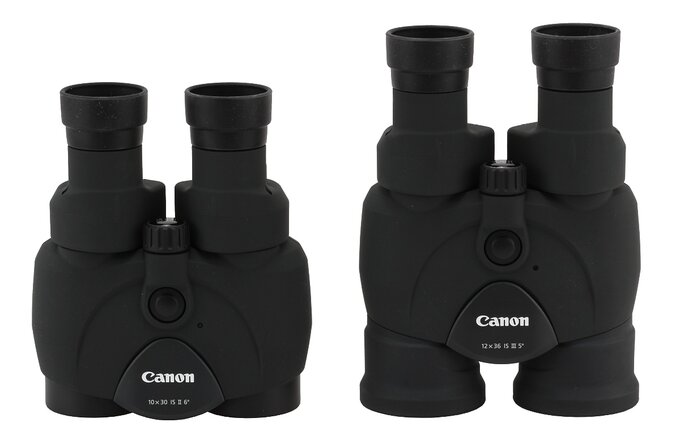
Canon 10x30 IS II and Canon 12x36 IS III. |
Let's return to optical stabilization. I feel it's justified to ask whether or not you should employ it in a device offering you just 10x magnification. The majority of users of optical instruments won't have any problems with keeping such a magnification steady in their hands. That's also why it is rather difficult to assess the efficiency of such a mechanism. Of course you can notice 'calming down' of images after switching it on but, for a person who uses 10x instruments every day, it's not an effect that provides a huge improvement of your observation comfort.
Of course if you think about it you can find uses for this type of equipment – I would look for potential customers among the youngest and the oldest fans of binoculars, as they most often can experience problems with keeping steady magnifications higher than 6-8 times.
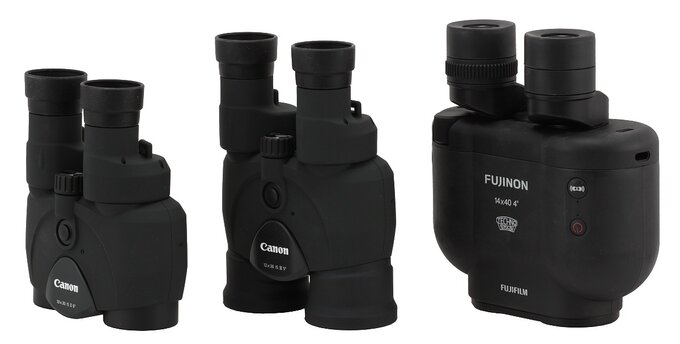
Canon 10x30 IS II, Canon 12x36 IS III and Fujinon 14x40 IS. |
As you see we managed to carp a lot but, over all, I think the binoculars don't deserve such a harsh opinion. A top-of-the-range 30 mm instrument manufactured by the best, well-renowned producers, now costs a fortune. Prices start at around 1000 USD. Canon is undoubtedly one of top optics manufacturers and yet they sell their set of binoculars for a price around 500 USD. Taking into account its optical properties, and a bonus in a form of a stabilization unit, it's really a bargain. I think it is a very nice, interesting addition to the market offer.

